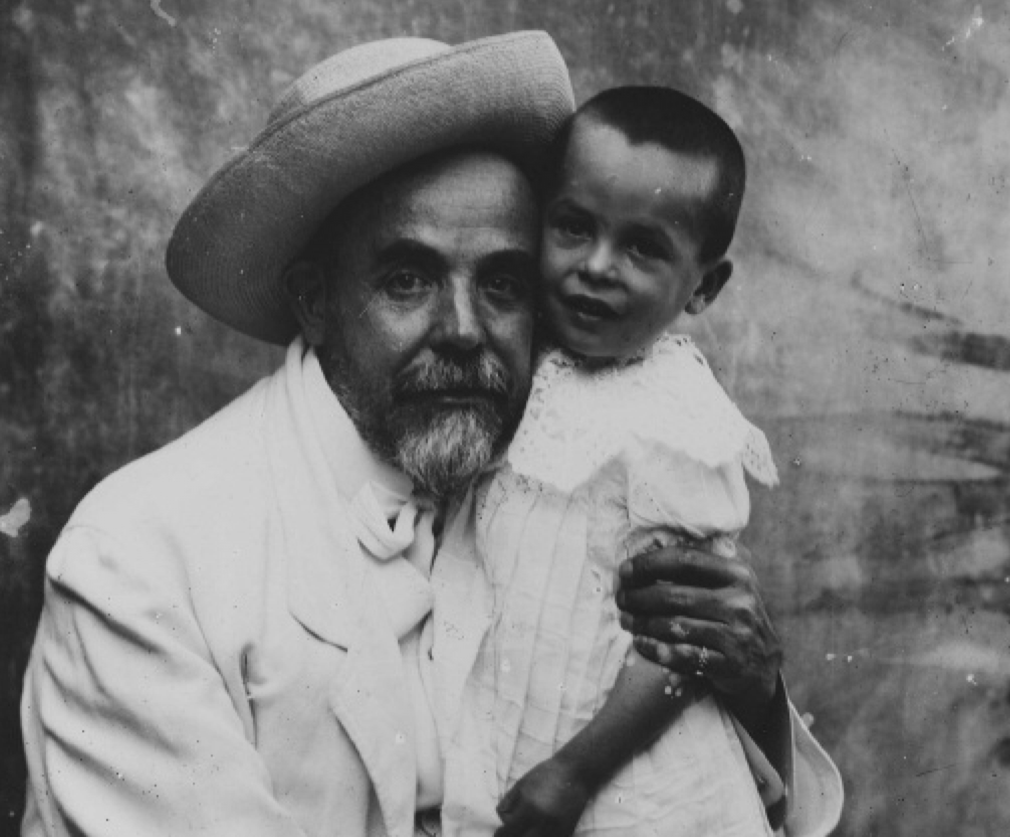SEBASTIANO SATTA (1867-1914)
Here are some brief comments and samples of Satta's poems, to illustrate why I think he is interesting and worth translating. Some full poems will be available soon.
Amongst many things in a large output, Satta wrote a sequence entitled ‘Conversations with the dead’ which is reminiscent of Thomas Hardy’s ‘Voices from Things Growing in a Churchyard’, where the first short stanza of ‘La Madre’ pictures mothers desperately searching in the hills for sons wounded in the murderous feuds then endemic in the area. It also curiously anticipates scenes in the cemetery in Salvatore Satta's later novel:
Il vento or si tace ora sfrasca, The wind is now silent now murmurs,
Ascolti? fra i noci e i noccioli: Can you hear? among walnuts and hazelnuts:
Ritornano i morti figlioli, Dead sons are returning,
O madre, col ronco e la tasca. O mother, with their knife and pouch.
‘La fanciulla’ evokes memories of his own daughter Raimonda who died at just over five months in 1907 (9 February - 18 July), using his nickname for her in plaintive words:
Biblina, dolce figlia, figlia morta Biblina, sweet daughter, daughter died
Nel fior degli anni tuoi come in un sogno! In the flowering of your life as if in a dream!
Vieni a cena… Come for supper…
They are volumes of life and death, beauty and horror, mountains and shepherds, which evoke Nuoro and its setting as powerfully as the quite different works of his friend Grazia Delleda and the later Salvatore.
He also participated in the social and political turmoil of the period, recalling here the trade unionists and miners killed by the army in a notorious event at Buggerru, in the south-west of Sardinia. These works were written in November 1904, in a poem entitled ‘I morti di Buggerru’ about the terrible massacre two months earlier:
Sardegna! dolce madre taciturna, Sardinia! sweet taciturn mother,
Non mai sangue più puro Never has blood more pure
E innocente di questo And innocent than this
ti bruciò il cor Burned your heart
Angry, sometimes banal and over-poetic in the earlier stanzas, he obviously felt these emotions with intense sincerity. His friend Francesco Cucca also mentions Buggerru in a poem he wrote called ‘Rhymes of Blood’, feeling the pain at a distance (he was then working in North Africa).
Caffé Tettamanzi today, still bookish
Sebastiano Satta played a key role in the intellectual life of Nuoro in Sardinia at the turn of the 20th century. He studied studied law in Sassari and became a successful lawyer, journalist and idealist of a socialist bent, but spent all his life in Nuoro. He was a part of the literary life which revolved around the still existing Caffé Tettamanzi with his friends Francesco Cucca, Attilio Deffenu and the Nobel prize-winning novelist Grazia Deledda. The Tettamanzi was also an important place in the great novel of his distant relative Salvatore Satta (1902-1975), Il giorno del giudizio (1972), in which the elementary schoolmaster Don Ricciotti ‘passed his life’ and plotted his route to becoming a member of parliament in Rome - without ever purchasing or consuming a drink!
The poet is remembered with a piazza, a street name, a liceo and a library; local fame for a poet trumps international renown for a fictional masterpiece. Local tourist information and websites often mention Sebastiano, but not always Salvatore. He is commemorated by an extraordinary series of sculptures on Piazza Sebastiano Satta, where his one-time home may still be seen. They are the work of the sculptor Costantino Nivola, who was born in nearby Orani in 1911 and died in East Hampton in 1988 (there is a museum commemorating him in Orani, just a few kilometres away). They consist of a series of irregular stone blocks which appear to be scattered randomly across the equally irregular square, each one concealing a tiny bronze figure representing aspects of the poet’s life. It is a quiet and traffic-free square in the heart of the city where Satta is praised for his work and part in city life in this authentic but modest way - just as his house is modest compared to others on the square - rather than a traditional Roman-style statue on a heavy plinth.
Here on the left is one of the sculptures by Costantino Nivola on Piazza Sebastiano Satta, here on the right. Caffé Tettamanzi is a few steps down from the piazza and across the road (photos by EB).




